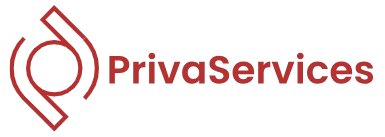Unlocking Productivity: A Comprehensive Guide to Productivity Tools
Productivity tools have become an indispensable part of our personal and professional lives, revolutionizing the way we work, communicate, and manage our time. From project management software to time tracking apps, these tools offer a wide range of solutions to enhance efficiency, streamline processes, and boost overall productivity. But what exactly are productivity tools, and how can they benefit you? In this comprehensive guide, we will delve into the world of productivity tools, exploring their various types, applications, and impact on our daily lives.
The Evolution of Productivity Tools

Productivity tools have a long history dating back to the early days of technology. The first productivity tools were simple devices like the abacus, invented thousands of years ago to aid in mathematical calculations. As technology advanced, so did productivity tools, with the invention of the typewriter, calculator, and eventually, the computer.
Today, productivity tools encompass a wide range of software applications and digital solutions designed to help individuals and organizations work more efficiently. From email management platforms to project collaboration tools, the evolution of productivity tools has been instrumental in shaping the way we work in the modern world.
With the rise of remote work and the increasing demand for flexible work arrangements, productivity tools have become more essential than ever. In a fast-paced, interconnected world, where time is of the essence, having the right tools at your disposal can make all the difference in your productivity and success.
Types of Productivity Tools

Productivity tools come in various forms, each serving a specific purpose to help you manage your tasks, projects, and time more effectively. Some of the most common types of productivity tools include:
Project Management Software

Project management software is designed to help teams plan, organize, and execute projects more efficiently. These tools typically offer features such as task management, scheduling, collaboration, and reporting, allowing team members to stay on track and work together towards a common goal.
Popular project management tools include Trello, Asana, and Monday.com, each offering unique features to suit different project management needs. Whether you’re a solo entrepreneur or part of a large team, project management software can help you stay organized and focused on your goals.
Time Tracking Apps

Time tracking apps are designed to help individuals monitor and manage their time more effectively. These tools can track the time spent on various tasks, projects, and activities, providing valuable insights into how you allocate your time throughout the day.
By using time tracking apps, you can identify time-wasting activities, set priorities, and improve your time management skills. Popular time tracking apps include Toggl, RescueTime, and Clockify, each offering different features to help you track and optimize your time usage.
Note-Taking Tools
Note-taking tools are essential for capturing ideas, thoughts, and information on the go. These tools allow you to jot down notes, create to-do lists, and organize your thoughts in a centralized location for easy reference.
Popular note-taking tools include Evernote, Microsoft OneNote, and Google Keep, each offering a range of features to help you capture and organize information efficiently. Whether you’re in a meeting, brainstorming session, or simply jotting down ideas, note-taking tools can help you stay organized and productive.
Communication Platforms
Communication platforms are essential for staying connected with colleagues, clients, and collaborators in today’s digital age. These tools enable real-time communication, file sharing, and collaboration, making it easier to work with remote teams and individuals.
Popular communication platforms include Slack, Microsoft Teams, and Zoom, each offering different communication features to suit various needs. Whether you’re conducting a virtual meeting, collaborating on a project, or simply chatting with colleagues, communication platforms can help you stay connected and productive.
Task Management Tools
Task management tools are designed to help individuals organize and prioritize their tasks more effectively. These tools enable you to create to-do lists, set deadlines, and track progress on various tasks and projects, ensuring that nothing falls through the cracks.
Popular task management tools include Todoist, Wunderlist, and Any.do, each offering different features to help you manage your tasks efficiently. Whether you’re a busy professional, student, or freelancer, task management tools can help you stay on top of your workload and achieve your goals.
Workflow Automation Software
Workflow automation software is designed to streamline repetitive tasks and processes, allowing you to automate manual work and save time. These tools can automate tasks such as data entry, document generation, and email responses, freeing up your time to focus on more important tasks.
Popular workflow automation tools include Zapier, Integromat, and Microsoft Power Automate, each offering different automation capabilities to suit different workflow needs. Whether you’re looking to automate your sales process, marketing campaigns, or administrative tasks, workflow automation software can help you work more efficiently and productively.
Productivity Tools in Action: Case Studies
To understand the real-world impact of productivity tools, let’s explore some case studies of organizations that have successfully implemented these tools to improve their efficiency and productivity:
Case Study 1: Slack at Shopify
Shopify, a leading e-commerce platform, implemented Slack as their primary communication platform to streamline communication and collaboration among their remote teams. By using Slack channels for different departments and projects, Shopify was able to reduce email clutter, improve real-time communication, and enhance team collaboration.
With Slack’s integration with other productivity tools like Google Drive and Trello, Shopify employees were able to access and share information seamlessly, leading to increased productivity and efficiency across the organization. By leveraging Slack as a central communication hub, Shopify was able to improve teamwork, streamline processes, and achieve better results.
Case Study 2: Trello at Buffer
Buffer, a social media management platform, implemented Trello as their project management tool to help teams stay organized and focused on their goals. By using Trello boards for different projects and tasks, Buffer employees were able to track progress, assign responsibilities, and collaborate effectively in a visual and intuitive way.
With Trello’s user-friendly interface and customizable features, Buffer teams were able to prioritize tasks, set deadlines, and manage projects more efficiently. By integrating Trello with other tools like Slack and Google Calendar, Buffer was able to create a seamless workflow that enhanced productivity and teamwork within the organization.
Common Misconceptions about Productivity Tools
Despite the numerous benefits of productivity tools, there are some common misconceptions that prevent individuals and organizations from fully embracing these tools:
Misconception 1: Productivity tools are only for large organizations
While productivity tools are often associated with large corporations, they can be equally beneficial for small businesses, startups, and individuals. Whether you’re a freelancer, entrepreneur, or student, productivity tools can help you work more efficiently, stay organized, and achieve your goals.
Misconception 2: Productivity tools are time-consuming to learn and implement
While it may take some time to familiarize yourself with productivity tools, the long-term benefits far outweigh the initial learning curve. With user-friendly interfaces, tutorials, and customer support, most productivity tools are designed to be intuitive and easy to use, allowing you to start reaping the benefits right away.
Comparative Analysis of Productivity Tools
When choosing productivity tools for your personal or professional use, it’s essential to consider the features, pricing, and compatibility of different tools to find the best fit for your needs. Here’s a comparative analysis of some popular productivity tools:
Trello vs. Asana
Trello and Asana are both popular project management tools that offer unique features to help teams collaborate and manage projects effectively. While Trello is known for its visual Kanban boards and customizable cards, Asana offers more advanced project tracking and reporting capabilities.
When deciding between Trello and Asana, consider the size and needs of your team, the complexity of your projects, and your preferred project management style. Both tools offer free and paid plans, making it easy to choose the one that best suits your requirements.
Evernote vs. Microsoft OneNote
Evernote and Microsoft OneNote are two popular note-taking tools that allow you to capture and organize information in a digital format. While Evernote is known for its robust features, cross-platform compatibility, and integration with other apps, Microsoft OneNote offers seamless integration with Microsoft Office and collaborative editing features.
When choosing between Evernote and Microsoft OneNote, consider your preferred note-taking style, the devices you use, and the level of integration you need with other apps and services. Both tools offer free and paid plans, making it easy to find the one that best suits your note-taking needs.
Conclusion: Empowering Your Productivity Journey
Productivity tools have the power to revolutionize the way you work, communicate, and manage your time. By leveraging the right tools for your personal and professional needs, you can enhance your efficiency, improve your productivity, and achieve your goals more effectively.
Whether you’re a student juggling multiple assignments, a freelancer managing various projects, or a business owner coordinating team activities, productivity tools can help you stay organized, focused, and on track towards success. As technology continues to evolve, so too will the capabilities and impact of productivity tools on our daily lives.
So, why wait? Take the first step towards unlocking your full potential with productivity tools today. Embrace the power of technology, streamline your workflows, and watch your productivity soar to new heights. The possibilities are endless when you have the right tools at your fingertips, empowering you to achieve more, do more, and be more in every aspect of your life.
To wrap things up, remember that productivity is not just about doing more; it’s about doing the right things at the right time. With the right tools and mindset, you can conquer your tasks, achieve your goals, and lead a more fulfilling and productive life. Start your productivity journey today and watch as your potential unfolds before your eyes. The power is in your hands – seize it and make the most of every moment.




